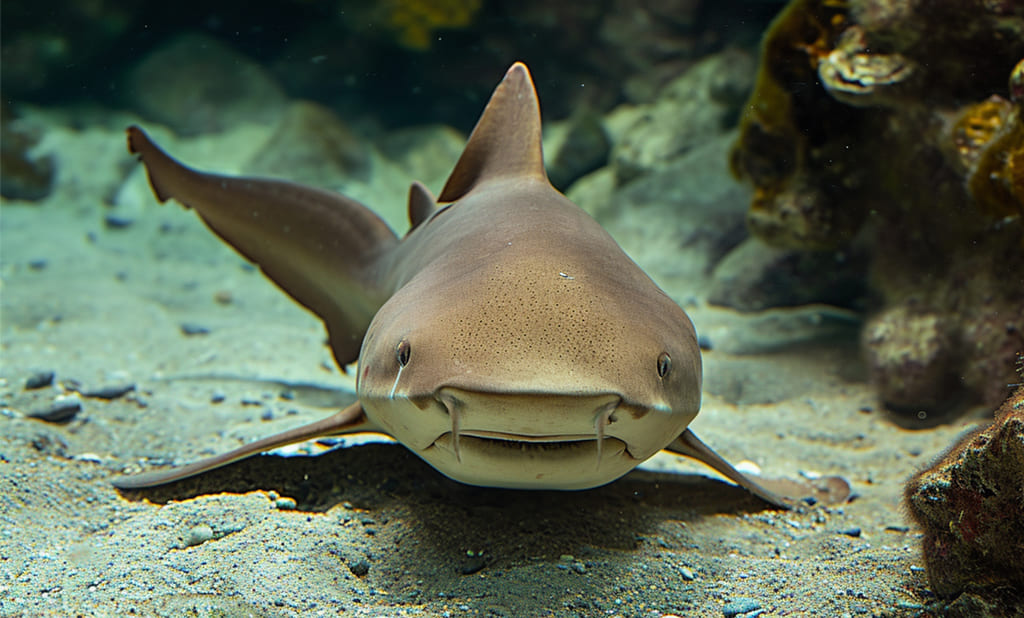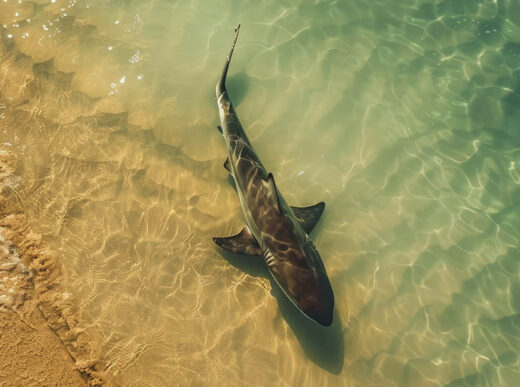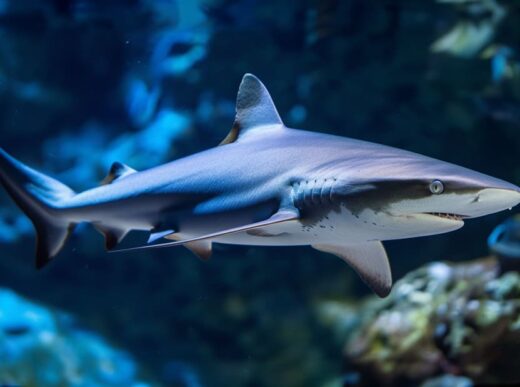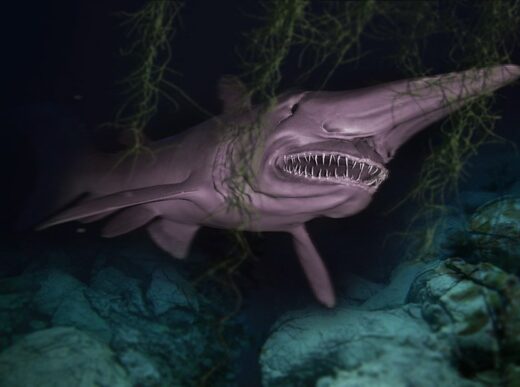Let’s dive into the fascinating world of nurse sharks! Get ready for an exciting journey through the mysterious waters where sharks reign supreme. We’ll explore 20 surprising facts about these unique creatures that are not only frequent inhabitants of oceanariums, but are also completely safe for humans.
20 Amazing Facts About Nurse Sharks
Embark on an exciting journey through the mysterious waters where sharks reign supreme, exploring the fascinating world of nurse sharks and their remarkable features.
Characteristics
1. These sharks belong to three cool-sounding genera: the moustache, rusty, and short-tailed nurse sharks. What sets them apart? Well, they all share a laid-back lifestyle and similar looks.
2. Now, here’s a fun fact: nurse sharks have a unique feature – two antennae on their lower jaw. It’s like having built-in sensors to sniff out the ocean floor for tasty treats.
3. Meet the stars of the nurse shark family: the whisker shark, the big guy reaching up to 4 meters, the rusty shark at a respectable 3 meters, and the petite short-tailed shark, not hitting the 1-meter mark.
4. Picture this – their heads rock a wide-arc shape with a short, wedge-like snout, and their bodies are decked out in large rhombus-shaped scales. Talk about a stylish appearance!
5. When it comes to colors, these sharks keep it simple and chic, rocking shades from grey-brown to yellow-brown.
6. Now, let’s talk teeth. Nurse sharks sport small, yet efficient teeth, perfect for grabbing onto their prey. Imagine 26 to 33 rows of these bad boys in their jaws! That’s one toothy grin you won’t forget.
Habitats
7. Let’s discover where these cool nurse sharks hang out! Moustache nurse sharks are like the jet-setters, chilling in tropical, subequatorial, and equatorial waters of the Atlantic and Pacific Oceans. They’re not picky; you might even spot them in atoll lagoons and mangrove swamps – true globetrotters!
8. Now, meet the rusty nurse sharks, cruising the waters of the Indian and Pacific Oceans. They’ve got a thing for the coasts of Africa, Hindustan, China, and northern Australia – talk about a diverse hangout!
9. And last but not least, the short-tailed nurse sharks are the rare gems of the family. You’ll find these elusive sharks off the coasts of Madagascar, Mauritius, and the Seychelles. They like to keep it exclusive!
Lifestyle
10. Picture this: Nurse sharks, the night owls of the ocean! By day, they’re like a sleepy social club, gathering in cozy packs of 30–40 pals, finding refuge among rocks for a nice siesta. But come nightfall, these sharks are solo hunters on a mission.
11. Now, these coastal explorers prefer the shallows, rarely taking a plunge beyond 70 metres. You’ll often spot them in the surf zone, and they’re not shy about wading in waters as shallow as 1 metre.
12. Need for speed? Check! Nurse sharks can hit up to 78 kilometres per hour when they’re feeling particularly zippy, but they usually cruise at a more leisurely pace of around 35 kilometres per hour.
Eating Habits
13. Talk about a cleanup crew! Nurse sharks take their job as bottom-feeders seriously. Picture them as the ocean’s vacuum cleaners, snacking on a buffet of crabs, squid, sea urchins, and even small fish. And here’s the quirky twist – they’re not just into seafood. You might find a touch of green in their stomachs because these sharks, being the hoovers they are, sometimes slurp up algae during their feeding frenzy. It’s like a full-course meal with a side of greens!
Intelligence and Social Behavior
14. Talk about some quirky habits! Nurse sharks have their version of «home is where the heart is.» Whether they’re chilling in a cozy crevice or claiming a prime cave, these sharks are creatures of habit.
15. And when it comes to dinner, they’re not just casual diners – they’ve got some tricks up their fins! Picture this: flipping over mollusks to enjoy a bite without the crunch. And here’s the fun part – in captivity, these sharks show off their smarts. They’re like the class pets of the sea, learning to chow down during the day and even grabbing a snack from the water’s surface. Now that’s what I call a well-trained underwater buddy!
Reproduction
16. Hold on to your fins – the whiskered nurse shark knows a thing or two about multitasking! Their pregnancy lasts around 5–6 months, and they don’t just stop at one or two – they’re expecting up to 30 little ones in a litter. Talk about a full house! And here’s the kicker – these sharks are viviparous, meaning the pups hatch from eggs right inside the womb. Now that’s what I call a cozy and convenient start to life in the deep blue.
Population
17. The nurse shark, with its distinct features and underwater charm, holds a mysterious status in the vast ocean. While there’s no concrete data on their population, scientists express some worries about a potential decline, leading to the species being labeled as vulnerable.
18. In their natural habitat, nurse sharks keep an eye out for other heavyweight contenders, with larger sharks like the hammerhead and bull shark posing as their main rivals. It’s a delicate dance in the deep blue, where survival is the name of the game.
Danger To Humans
19. The nurse shark is pretty chill and doesn’t go around picking fights with humans. Instances of attacks usually happen when humans provoke them, like annoying divers attempting to ride on their backs. It’s a case of self-defense, you know?
20. And while nurse sharks aren’t a hot commodity in the fishing industry, local fishermen still catch them for their sturdy skin, fatty liver, and meat. They’ve got a few culinary tricks up their sleeves, turning the meat into various dishes, including flour.
Are There Any Aquariums with Nurse Shark?
The nurse shark is a frequent sight off the coasts of Mexico, the USA, and Africa. Divers often organize special tours to explore their habitats, and the best part is, no special precautions are needed for these dives.
Nurse sharks are among the most commonly featured species in oceanariums. They adapt well to captivity, and here’s a cool tidbit—they can even be trained to grab food from the water’s surface.
Ready to witness the charm of a nurse shark? Head to oceanariums!




